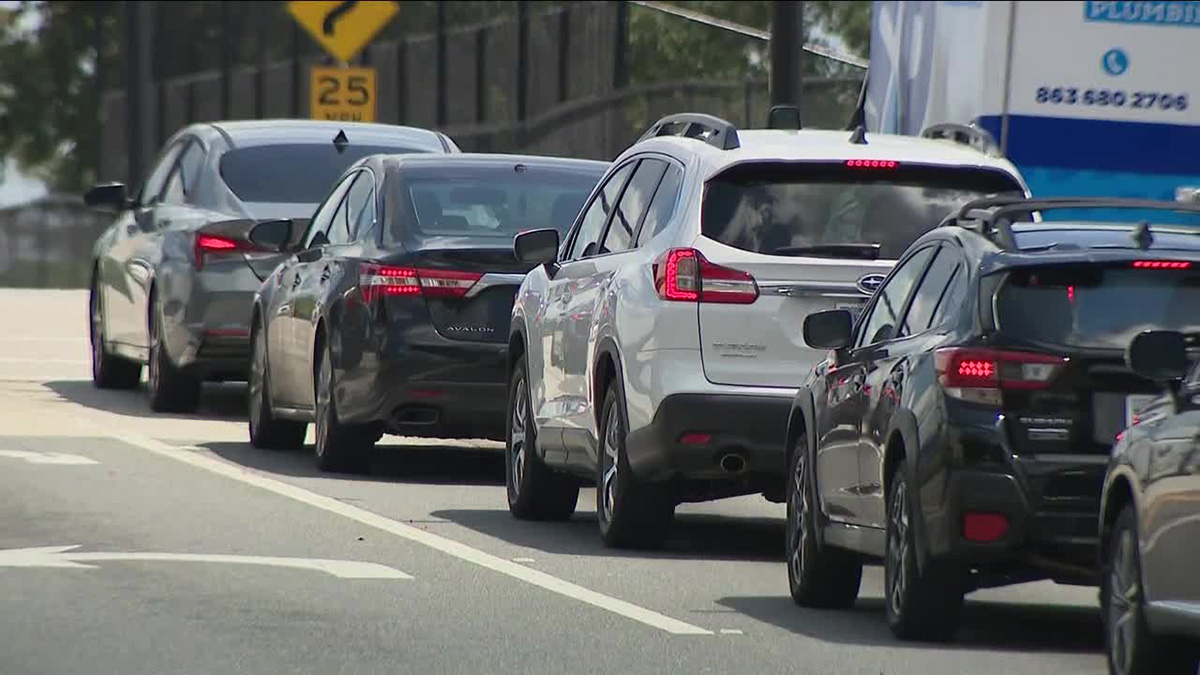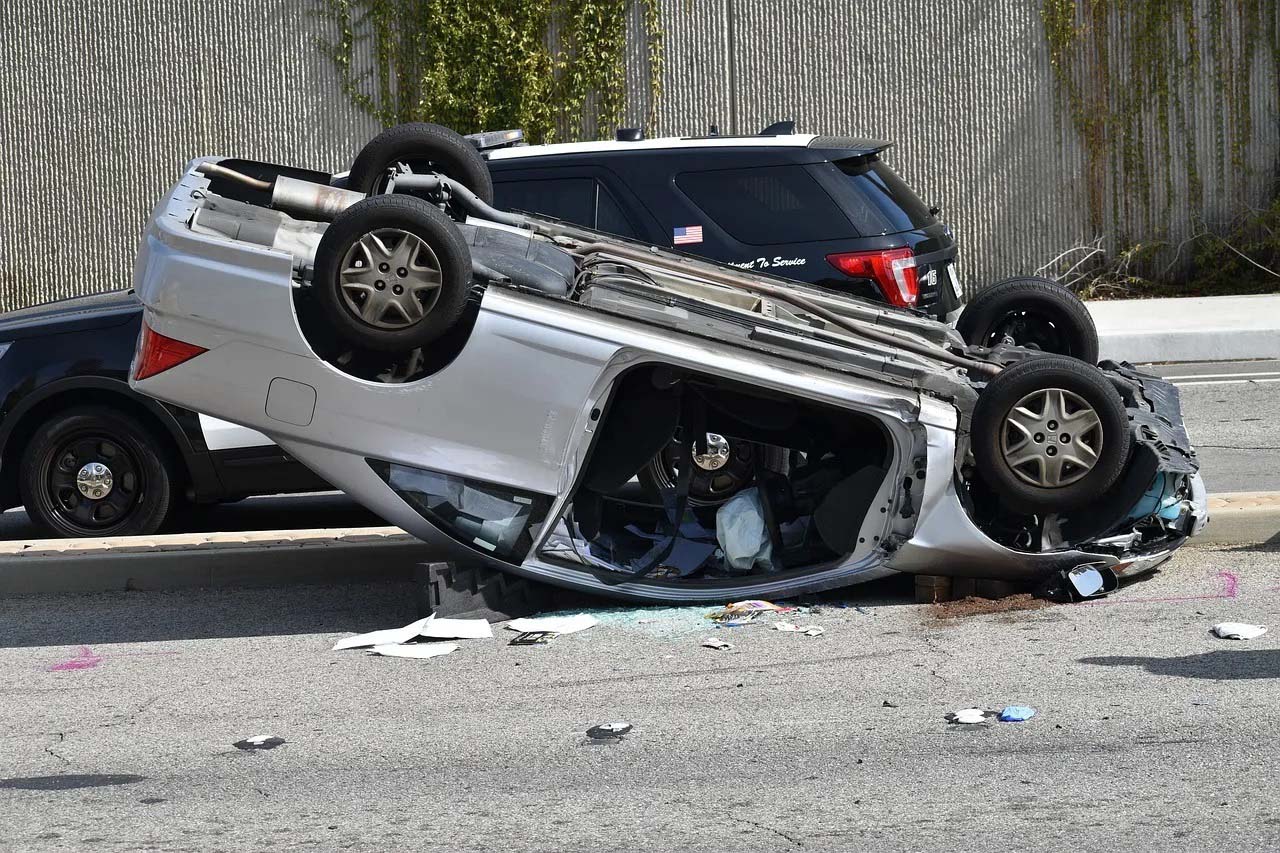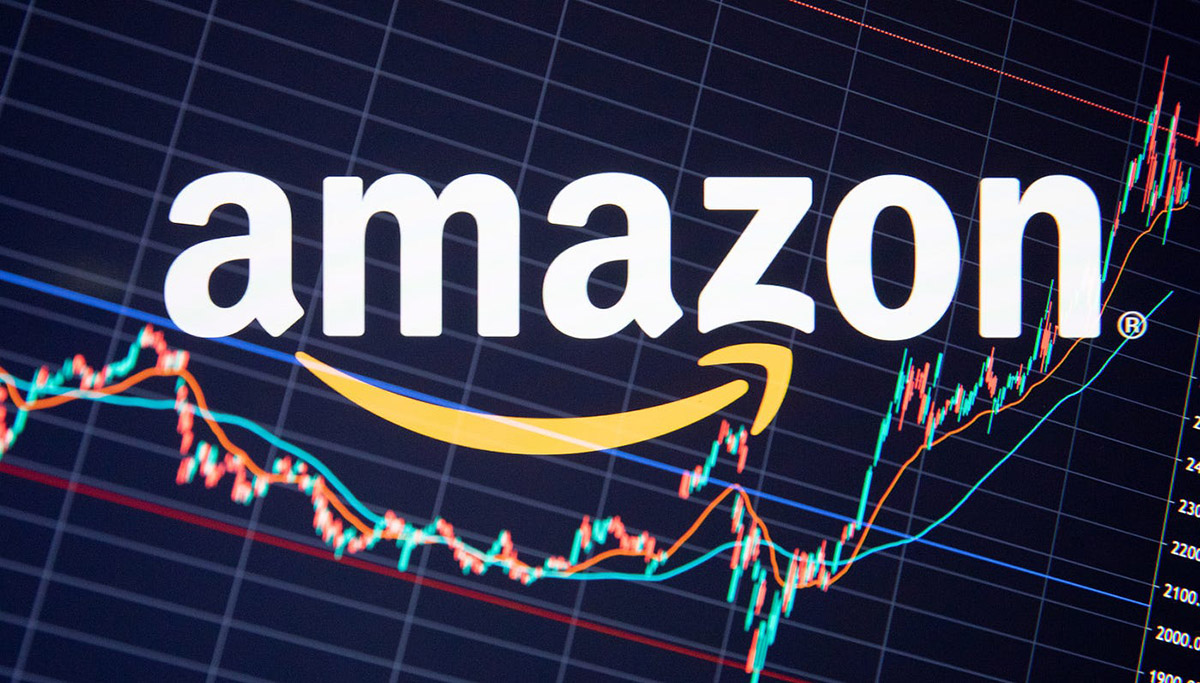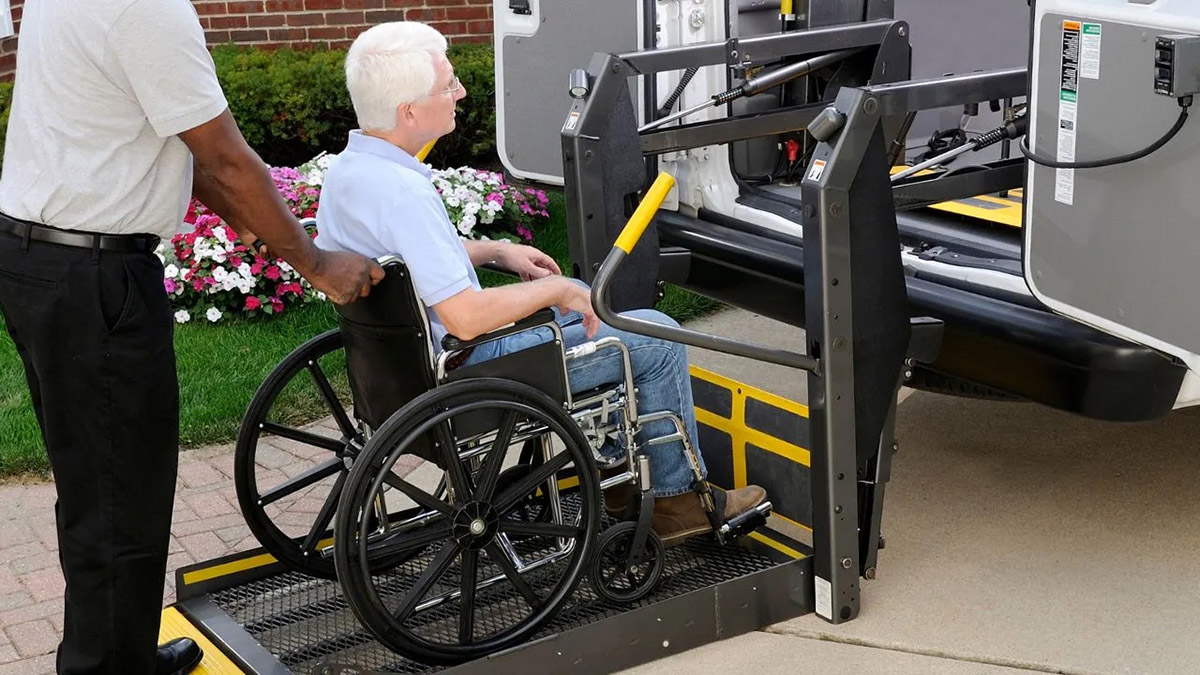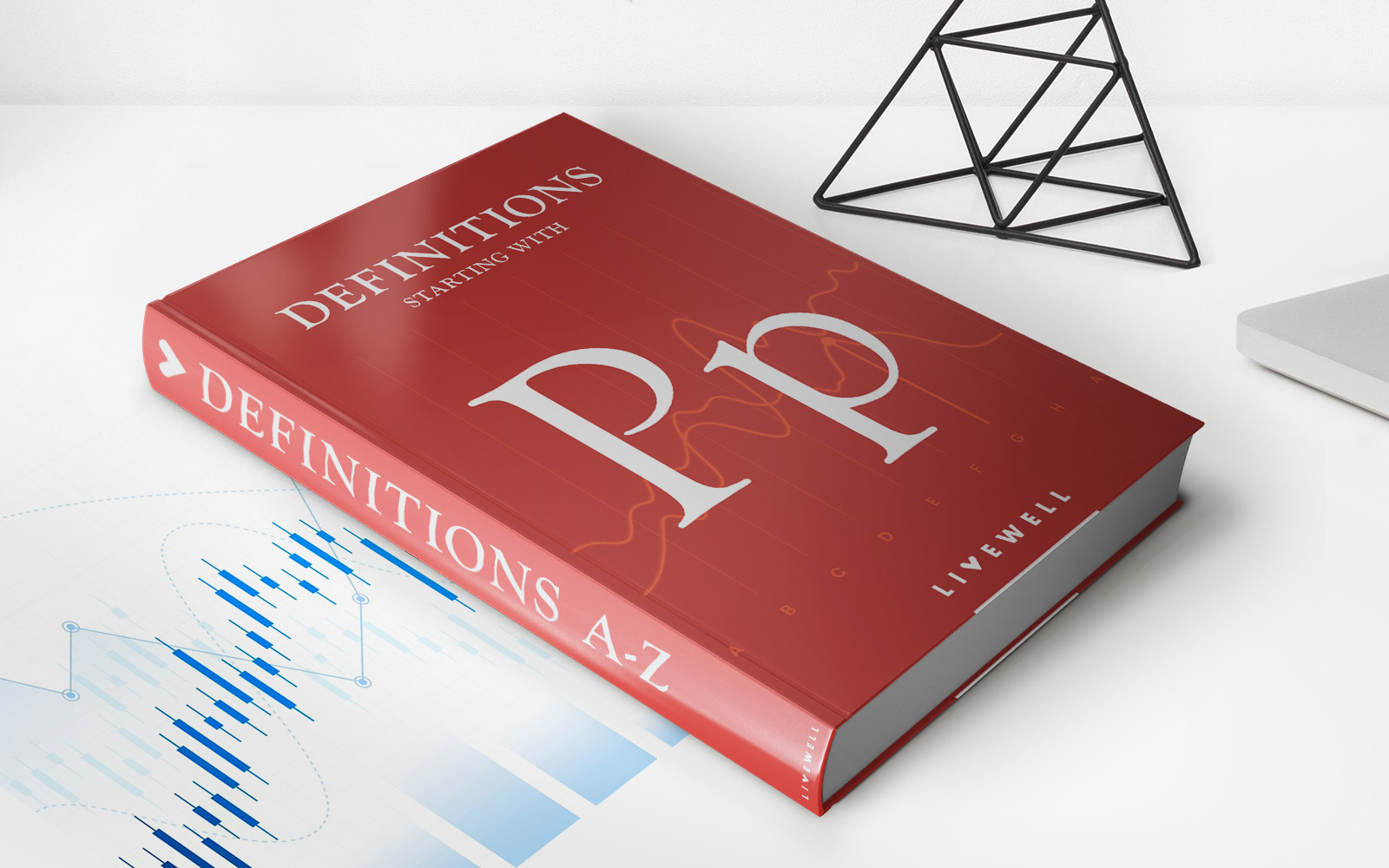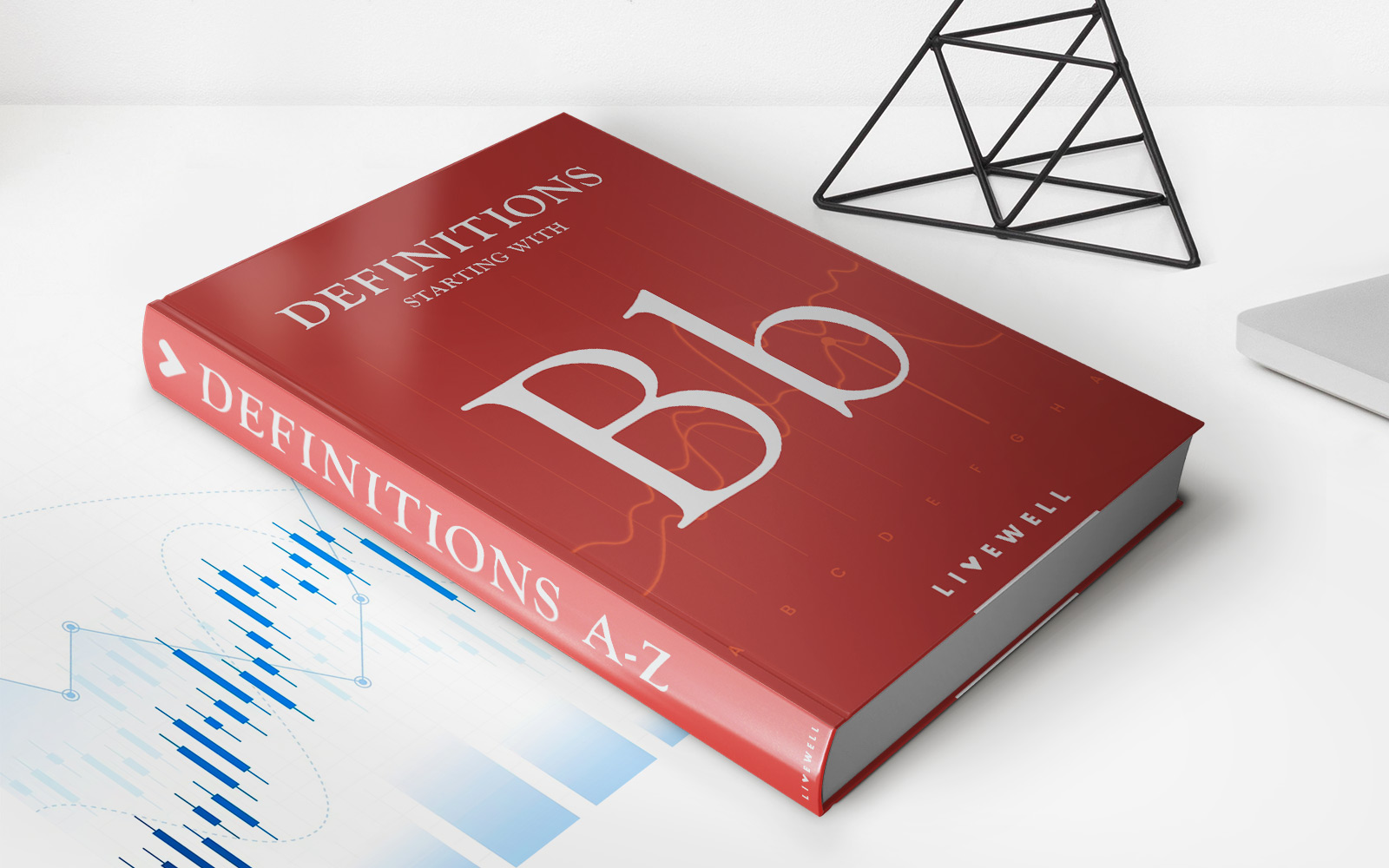

Finance
Why Is Commercial Auto Insurance So Expensive
Published: November 22, 2023
Looking for answers to why commercial auto insurance is so expensive? Explore the financial factors affecting premium rates and find ways to mitigate costs.
(Many of the links in this article redirect to a specific reviewed product. Your purchase of these products through affiliate links helps to generate commission for LiveWell, at no extra cost. Learn more)
Table of Contents
- Introduction
- Factors Affecting Commercial Auto Insurance Costs
- Increased Risk and Liability
- High Frequency of Claims
- Rising Medical Costs
- Vehicle Maintenance and Repair Expenses
- Limited Competition in the Commercial Auto Insurance Market
- Effects of Poor Driving Records and Accidents
- Industry Regulations and Compliance Costs
- Impact of Insurance Fraud
- Ways to Reduce Commercial Auto Insurance Costs
- Conclusion
Introduction
Commercial auto insurance plays a vital role in protecting businesses from financial loss due to accidents or damage involving their vehicles. Whether it’s a fleet of delivery trucks, service vehicles, or company cars, having appropriate insurance coverage is crucial. However, many business owners find themselves puzzled by the high cost of commercial auto insurance. Understanding the factors that contribute to these expenses can help make sense of the pricing structure.
Commercial auto insurance differs from personal auto insurance in terms of coverage and cost. The increased risk and liability associated with commercial vehicles often result in higher premiums. Insurers take into account various factors, such as the type of vehicle, purpose of use, and driving records, when determining the cost of coverage. Additionally, factors like frequency of claims, rising medical costs, vehicle maintenance and repair expenses, limited competition in the market, poor driving records, industry regulations, and insurance fraud all contribute to the overall cost of commercial auto insurance.
Despite the high cost, it is important for businesses to not compromise on commercial auto insurance. Without adequate coverage, businesses can face devastating financial consequences in the event of accidents, lawsuits, or property damage. This article aims to delve into the factors that make commercial auto insurance expensive and explore ways for businesses to mitigate these costs.
Factors Affecting Commercial Auto Insurance Costs
Several key factors contribute to the high cost of commercial auto insurance. Understanding these factors can provide insights into why premiums are often higher compared to personal auto insurance. Insurers consider these factors when determining the level of risk associated with insuring commercial vehicles:
- Type of Vehicle: The type and size of the vehicle play a significant role in insurance costs. Larger vehicles, such as trucks or buses, tend to have higher premiums due to their increased potential for causing more severe damage in accidents.
- Purpose of Use: The primary use of the vehicle also impacts insurance costs. Vehicles used for commercial purposes, such as courier services or transportation companies, typically face a higher level of risk compared to those used for personal use.
- Driving Records: The driving records of the drivers operating the commercial vehicles are crucial. Insurers consider the number of accidents, traffic violations, and driving experience of the employees. Poor driving records can lead to higher premiums as they indicate a higher risk of accidents.
- Business Industry: The industry in which the business operates can also influence insurance costs. Certain industries, such as construction or delivery services, may be associated with higher risks due to the nature of their operations.
- Location: The location where the business operates or the vehicles are primarily used can impact insurance costs. Areas with higher traffic congestion or a history of higher accident rates may result in increased premiums.
- Coverage Limits: The level of coverage selected by the business also affects insurance costs. Higher coverage limits provide greater financial protection but come with higher premiums.
- Claims History: The claims history of a business influences insurance costs. If a business has a frequent history of claims or has been involved in significant accidents, insurers may consider them to be high-risk and charge higher premiums.
- Employee Training: The training and safety measures implemented by the business for its drivers can have an impact on insurance costs. Well-trained drivers with a history of safety awareness demonstrate a lower risk and may receive lower premiums.
These factors, among others, are taken into consideration by insurers when calculating premiums for commercial auto insurance. While some factors may be outside a business’s control, understanding how they contribute to costs can help businesses make informed decisions to minimize their insurance expenses.
Increased Risk and Liability
One of the primary factors that contribute to the high cost of commercial auto insurance is the increased risk and liability associated with operating commercial vehicles. Compared to personal vehicles, commercial vehicles often have a higher risk of accidents and the resulting damages can be more severe. This higher risk leads to higher insurance premiums.
Commercial vehicles are typically driven for longer distances and for more extended periods, increasing the chances of accidents occurring. These vehicles may also be involved in deliveries, transporting goods, or providing services, which further exposes them to potential accidents, property damage, and bodily injury.
In addition to the risks posed by the nature of commercial vehicle operations, businesses also face higher liability. Imagine a scenario where a delivery truck gets into an accident and causes significant damage to other vehicles or property. The business that owns the truck can be held legally responsible for the damages and injuries resulting from the accident. The potential liability in such cases can be substantial, leading to higher insurance premiums to cover these potential costs.
Furthermore, businesses operating commercial vehicles may have multiple drivers, making it more challenging to ensure consistent driving practices and maintain safety standards. The lack of control over driver behavior and the potential for human error increase the risk of accidents, further driving up insurance costs.
Insurers take into account the increased risk and liability associated with commercial vehicles when determining the insurance premiums. The coverage provided by commercial auto insurance aims to protect businesses from potential financial loss resulting from accidents, damages, injuries, or legal claims.
It is important for businesses to recognize the increased risk and liability associated with commercial vehicles and have the appropriate insurance coverage in place to mitigate these risks. While commercial auto insurance may be expensive, the potential financial consequences of not having adequate coverage can be far more costly.
High Frequency of Claims
The high frequency of claims is another factor that significantly impacts the cost of commercial auto insurance. Commercial vehicles, due to their extensive use for business operations, are more susceptible to accidents, resulting in a higher number of insurance claims.
Commercial vehicles often travel longer distances, increasing their exposure to various road conditions, traffic, and potential hazards. This higher mileage significantly raises the probability of accidents and increases the likelihood of filing insurance claims. Moreover, as commercial vehicles are driven by multiple employees, the chances of accidents can further escalate.
Businesses that heavily rely on commercial vehicles, such as delivery services or logistics companies, often encounter a higher frequency of claims due to the daily operation demands. Even with careful driver selection and proper training, accidents can still occur due to factors beyond the driver’s control, including weather conditions or the actions of other motorists.
Additionally, the types of commercial vehicles used can also contribute to the high frequency of claims. Larger vehicles, such as trucks or buses, tend to be involved in more accidents due to their size and limited maneuverability.
Insurance companies take into account the increased risk and the likelihood of frequent claims when calculating the premiums for commercial auto insurance. The more claims a business files, the higher the insurance costs may be due to the insurer having to pay out for damages, injuries, and legal expenses on a more frequent basis.
Business owners can reduce the frequency of claims and potentially lower their insurance costs by implementing proper risk management practices. This includes comprehensive driver training programs, vehicle maintenance protocols, and safety policies that prioritize accident prevention. By promoting a culture of safety, businesses can minimize the risk and frequency of accidents, which in turn can have a positive impact on their insurance premiums.
While the high frequency of claims contributes to the overall cost of commercial auto insurance, businesses that focus on proactive risk management can demonstrate their commitment to safe operations and potentially benefit from lower insurance premiums.
Rising Medical Costs
One significant factor that contributes to the high cost of commercial auto insurance is the rising costs of medical care. In the event of an accident involving commercial vehicles, there is a potential for bodily injuries to occur to drivers, passengers, or pedestrians. The medical expenses associated with treating these injuries have been steadily increasing, leading to higher insurance premiums.
The cost of medical care, including hospitalization, surgeries, medications, and rehabilitation, has been on the rise for several years. This has a direct impact on the insurance industry, as insurers must cover the medical expenses resulting from accidents involving commercial vehicles.
In addition to the general rise in medical costs, there are specific factors that contribute to increased expenses in the context of commercial auto insurance. Commercial vehicles are often larger and heavier, which can result in more severe accidents and greater potential for serious injuries. The severity of the injuries and the need for extensive medical care further drive up insurance costs.
In some cases, injuries sustained in commercial auto accidents can lead to long-term disabilities or chronic health conditions, resulting in ongoing medical expenses. Insurers take these factors into account when calculating premiums, as they must anticipate the potential for significant medical costs related to accidents involving commercial vehicles.
Furthermore, the liability aspect of commercial auto insurance also plays a role in the rising costs. If the accident results in lawsuits and legal claims, the insurance company may be responsible for providing compensation for medical expenses, pain and suffering, and other related costs. These legal expenses can add to the overall insurance costs and contribute to the rising premiums for commercial auto insurance.
While businesses cannot control the rising costs of medical care, they can take steps to mitigate the impact on insurance premiums. Implementing rigorous driver training programs, maintaining a strong safety culture, and enforcing strict adherence to traffic laws and regulations can help reduce the likelihood of accidents and resulting injuries. By minimizing accidents, businesses can potentially lower their medical claim frequency and demonstrate their commitment to safe operations, which may positively influence their insurance costs.
In an ever-evolving healthcare landscape, the rising costs of medical care continue to affect the pricing structure of commercial auto insurance. Businesses must carefully evaluate their insurance needs and work with insurance providers who offer comprehensive coverage to protect against the potential financial burdens of accidents and rising medical costs.
Vehicle Maintenance and Repair Expenses
Vehicle maintenance and repair expenses are significant contributors to the high cost of commercial auto insurance. As businesses rely on their commercial vehicles for daily operations, maintaining the proper condition of these vehicles is essential for both safety on the road and insurance costs.
Commercial vehicles generally endure more wear and tear compared to personal vehicles due to their heavy usage, longer distances traveled, and exposure to various road conditions. Regular maintenance, including oil changes, tire rotations, and brake inspections, is necessary to ensure the vehicles operate safely and efficiently.
Failure to properly maintain commercial vehicles can lead to mechanical issues or accidents, resulting in insurance claims and potential liability. Insurers take into consideration the condition of the vehicles when determining insurance premiums. If a business has poor vehicle maintenance practices or a history of accidents caused by mechanical failures, insurers may deem them higher risk and charge higher premiums.
In addition to maintenance, repair expenses can also impact insurance costs. Accidents or damages requiring repairs can be costly, especially for commercial vehicles that may require specialized parts or repairs. The higher repair costs associated with commercial vehicles contribute to the overall insurance expenses.
Businesses that invest in regular maintenance and prioritize timely repairs demonstrate a commitment to safe operations and risk mitigation. By implementing strong vehicle maintenance protocols and addressing issues promptly, businesses can potentially reduce the likelihood of accidents caused by mechanical failures and keep insurance costs in check.
Utilizing a fleet management system can also help businesses monitor and maintain their vehicles more efficiently. These systems provide insights into vehicle performance, maintenance schedules, and driver behavior, allowing businesses to identify potential issues early on and take proactive measures to prevent accidents.
Efficient vehicle maintenance not only contributes to safer operations but also plays a crucial role in managing insurance costs. By prioritizing vehicle maintenance and promptly addressing repairs, businesses can potentially lower their insurance premiums, minimize downtime due to vehicle breakdowns, and enhance the overall safety and reliability of their commercial fleet.
Limited Competition in the Commercial Auto Insurance Market
One factor that contributes to the high cost of commercial auto insurance is the limited competition within the market. Unlike personal auto insurance, the commercial auto insurance market is characterized by fewer insurers willing to provide coverage. This lack of competition allows insurers to charge higher premiums.
There are several reasons why the commercial auto insurance market has limited competition. Firstly, the inherent risks associated with insuring commercial vehicles make it less attractive for insurers. Commercial vehicles are often subjected to more mileage, operate in diverse environments, and may carry higher liability risks. Insurers perceive these factors as additional risks, which may result in higher claim frequencies and payouts.
Furthermore, the specialized knowledge required to underwrite commercial auto policies adds complexity and cost to the underwriting process. This can discourage smaller insurance companies with limited resources from entering the market, leaving it dominated by larger, established insurers.
In addition, the regulatory environment surrounding commercial auto insurance can create barriers to entry for new competitors. Compliance with state regulations, underwriting guidelines, and risk assessment procedures can be time-consuming and costly. Some insurers may choose to focus on other lines of insurance that are considered to be less complicated and more profitable.
The limited competition in the commercial auto insurance market gives insurers more pricing power and the ability to set higher premiums. Without the pressure of competitive pricing, insurers have less incentive to offer lower rates to businesses seeking coverage.
However, despite the limited competition, businesses can still take steps to maximize their options and potentially find more affordable commercial auto insurance. Consultation with an insurance broker or agent who specializes in commercial auto insurance can help businesses explore different coverage options and find insurers who are more willing to provide competitive rates.
Additionally, businesses can invest in risk management strategies to demonstrate their commitment to safety and mitigate insurance costs. This includes implementing driver training programs, maintaining a clean claims history, and implementing safety measures to minimize accidents and property damage. By reducing their risk profile, businesses may be able to negotiate better rates with insurers and mitigate the impact of the limited competition.
Ultimately, businesses should carefully evaluate their insurance needs, conduct thorough research, and work with insurance providers who understand the unique requirements of commercial auto insurance. By understanding the constraints of limited competition and taking proactive measures, businesses can still find suitable coverage options at optimal pricing.
Effects of Poor Driving Records and Accidents
Poor driving records and a history of accidents can have significant implications on the cost of commercial auto insurance. Insurance companies consider the past driving behavior of a business and its drivers as an indicator of future risk. Businesses with poor driving records or a high frequency of accidents are deemed higher risk and may face higher insurance premiums.
Insurers assess several factors related to driving records when determining insurance premiums. These factors include the number of accidents, traffic violations, and driving history of employees operating the commercial vehicles. A history of accidents or frequent traffic citations raises concerns about the safety and reliability of the drivers, ultimately resulting in higher insurance costs.
Businesses with a higher claim frequency due to accidents represent increased financial risk for insurance providers. Frequent claims require the insurer to pay out for damages, injuries, and potential legal expenses more frequently, which in turn drives up insurance costs. Furthermore, accidents can negatively impact the business’s reputation and future insurability, making it more challenging to find affordable coverage in the future.
In addition to increased insurance premiums, businesses with poor driving records may also face limitations in the coverage options available to them. Insurers may be hesitant to offer comprehensive coverage or impose additional restrictions and higher deductibles due to the perceived risk associated with the business’s driving history.
Addressing poor driving records and reducing the frequency of accidents is crucial for businesses seeking to lower their insurance costs. Implementing a rigorous driver training program, emphasizing safe driving practices, and providing ongoing education can help improve the driving behavior of employees. Regular monitoring of driving records, addressing any concerns promptly, and enforcing consequences for violations or accidents can also contribute to positive changes in driving behavior.
By focusing on improving driving records and reducing accidents, businesses can demonstrate to insurance providers their commitment to safety, risk management, and responsible operations. Insurance providers may be more willing to offer better rates or coverage options to businesses that have taken proactive measures to address past driving issues.
While it may take time to improve a poor driving record, businesses should remain diligent in their efforts to enhance driver safety. Taking steps to create a culture of safety and responsible driving can lead to not only lower insurance costs but also fewer accidents, improved operational efficiency, and the protection of their employees’ well-being.
Industry Regulations and Compliance Costs
Industry regulations and compliance requirements play a significant role in driving up the cost of commercial auto insurance. The insurance industry is heavily regulated, and insurers must comply with various federal, state, and local laws pertaining to commercial auto insurance. These regulations impose additional costs on insurers, which are then passed on to businesses in the form of higher insurance premiums.
Compliance with industry regulations comes with certain expenses, including administrative costs, legal fees, and the need for specialized expertise. Insurers must allocate resources to ensure they are in compliance with licensing requirements, underwriting guidelines, claims handling procedures, and financial solvency regulations. These costs contribute to the overall expenses of insurance companies and are reflected in the premiums charged to businesses seeking commercial auto coverage.
In addition to the direct compliance costs, regulations can also impact insurance premiums indirectly. For example, certain regulations may require insurance companies to provide certain coverages or set minimum limits of liability. These requirements can increase the potential payouts insurers must cover, leading to higher premiums for businesses.
Moreover, regulatory changes and updates can also impact insurance costs. As regulations evolve, insurers must adjust their policies and practices to remain in compliance. Changes in regulations can bring about added complexities, paperwork, and increased monitoring, all of which contribute to higher operational costs for the insurers.
While industry regulations are important for ensuring the fair and responsible operation of the commercial auto insurance market, they can present challenges for businesses seeking affordable coverage. However, businesses can take proactive measures to navigate these regulatory challenges and potentially mitigate insurance costs.
Staying informed about regulatory updates and changes can help businesses anticipate the potential impact on insurance costs. Working closely with insurance brokers or agents who specialize in commercial auto insurance can provide valuable insights on compliance requirements and cost-saving strategies.
Implementing risk management practices, maintaining proper documentation, and conducting regular audits to ensure compliance can also help businesses demonstrate their commitment to following regulations. Insurance providers may be more willing to offer competitive rates to businesses that can demonstrate a strong compliance record and a proactive approach to risk management.
Understanding the influence of industry regulations and compliance costs on commercial auto insurance is essential for businesses. By staying informed, improving compliance practices, and working closely with insurance providers, businesses can navigate the regulatory landscape more effectively and potentially find ways to minimize the impact of compliance costs on their insurance premiums.
Impact of Insurance Fraud
Insurance fraud is a significant factor that contributes to the high cost of commercial auto insurance. Fraudulent activities, such as staged accidents, false claims, or exaggeration of damages, place a financial burden not only on insurance companies but also on businesses seeking insurance coverage.
Insurance fraud is a deliberate act carried out with the intention of obtaining benefits or payments under false pretenses. In the context of commercial auto insurance, fraud can involve individuals or organized groups targeting businesses by orchestrating accidents or submitting fraudulent claims for damages or injuries that did not occur.
Insurance fraud negatively impacts insurance premiums in several ways. First, insurance companies lose money when they pay out on fraudulent claims, and these losses are ultimately passed on to all policyholders through increased premiums.
Insurance providers must also allocate resources to investigate and combat fraud, which adds to the overall operational costs. These costs are factored into the premiums charged to businesses, contributing to higher insurance expenses.
Businesses themselves can also fall victim to insurance fraud. They may face higher premiums if insurance providers have to compensate for fraudulent claims filed against the business or if the business has a history of being targeted by fraudulent activities.
The impact of insurance fraud extends beyond financial consequences. It erodes trust within the insurance industry, increases administrative burdens for insurers and businesses, and can lead to longer claims processing times, resulting in delays and potential disruptions to business operations.
To combat insurance fraud, businesses can collaborate with insurance providers by promptly reporting any suspicious activities or fraudulent claims they encounter. Businesses should also implement robust risk management practices, which include thorough documentation, thorough investigations of accidents or incidents, and monitoring to detect any red flags that may indicate fraudulent activities.
Insurance companies are continuously working to improve fraud detection and prevention measures. The use of advanced technology, data analytics, and sharing of information within the industry help insurers identify patterns, detect suspicious claims, and reduce fraud-related expenses. The collective effort of businesses and insurance providers can help combat insurance fraud and maintain a more sustainable and affordable commercial auto insurance market.
Ways to Reduce Commercial Auto Insurance Costs
Although commercial auto insurance costs can be high, there are strategies that businesses can implement to help reduce their insurance expenses. By taking proactive measures to mitigate risk and demonstrate a commitment to safety, businesses may be able to negotiate lower premiums and improve their overall insurance affordability. Here are some ways to reduce commercial auto insurance costs:
- Implement a comprehensive risk management program: Develop and enforce a robust risk management program that includes driver training, regular vehicle maintenance, and safety policies. Insurance providers view businesses with strong risk management practices favorably and may offer lower premiums as a result.
- Invest in driver safety training: Regularly train and educate employees on safe driving practices. This can help reduce the likelihood of accidents and demonstrate to insurers that the business prioritizes safety.
- Maintain a clean claims history: Minimize the number of claims filed by implementing preventative measures and emphasizing safe driving practices. Insurance companies consider businesses with a clean claims history as lower risk and may offer more competitive premiums.
- Consider higher deductibles: Choosing a higher deductible can lower insurance premiums. However, businesses need to assess their financial capabilities to cover the deductible in the event of a claim.
- Review coverage limits: Evaluate the coverage limits to ensure they align with the business’s specific needs. Adjusting coverage limits appropriately can help lower premiums without compromising necessary protection.
- Shop around and compare quotes: Obtain quotes from multiple insurance providers and compare coverage options and pricing. This allows businesses to find the most competitive rates for their commercial auto insurance needs.
- Bundle insurance policies: Consider bundling various insurance policies, such as general liability and property insurance, with commercial auto insurance. Insurers often offer discounts for bundled policies, resulting in overall cost savings.
- Utilize telematics or fleet management systems: Implement telematics or fleet management systems that provide insights into driver behavior, vehicle performance, and maintenance schedules. These systems can help identify areas for improvement, reduce accidents, and potentially lead to lower insurance premiums.
- Work with an insurance broker: Consult with an insurance broker who specializes in commercial auto insurance. They can provide valuable insights, negotiate favorable terms, and recommend coverage options that align with the business’s needs and budget.
While these strategies can help reduce commercial auto insurance costs, it’s important to strike a balance between cost-saving measures and maintaining adequate coverage. Businesses should carefully evaluate their unique insurance needs and consult with insurance professionals to find an optimal solution that balances risk management with affordability.
Conclusion
Commercial auto insurance costs can be substantial, but understanding the factors that contribute to these expenses is essential for businesses. Factors such as increased risk and liability, high frequency of claims, rising medical costs, vehicle maintenance and repair expenses, limited competition in the market, poor driving records and accidents, industry regulations and compliance costs, and insurance fraud all play a role in driving up insurance premiums.
While some of these factors may be beyond a business’s control, there are steps that businesses can take to mitigate commercial auto insurance costs. Implementing comprehensive risk management programs, investing in driver training, maintaining a clean claims history, considering higher deductibles, reviewing coverage limits, shopping around for quotes, bundling policies, utilizing telematics or fleet management systems, and working with insurance brokers are all strategies that can help reduce insurance expenses.
Businesses should also stay informed about industry regulations and compliance requirements to navigate these challenges effectively. By demonstrating a commitment to safety, risk management, and responsible operations, businesses can present themselves as lower risk to insurance providers and potentially negotiate better rates.
It is crucial for businesses to weigh the cost of insurance against the potential financial consequences of accidents, liability claims, and damage to their reputation. Having adequate commercial auto insurance coverage is necessary to protect against these risks and provide financial security for the business.
Ultimately, finding the right balance between cost and coverage is key. Businesses should carefully evaluate their insurance needs, assess various coverage options, and work with insurance professionals who specialize in commercial auto insurance to find the most suitable and cost-effective solution.
By understanding the factors impacting commercial auto insurance costs and implementing proactive measures, businesses can manage their insurance expenses while ensuring they are adequately protected on the road. This investment in insurance can bring peace of mind, protect the business’s assets, and contribute to its long-term success.
